Mangaluru, Feb 17: The 40th Swacch Mangaluru Abhiyan was held in the Mangaladevi area in the coastal city recently wherein RSS leader and Convener and Sri Rama Vidya Kendra, Kalladka Prabhakar Bhat among others participated in the cleanliness drive.
A small stage programme was also organized at the venue. Chief guests Swami Srikantanandaji, Adhyaksha, Ramakrishna Mutt, Pune and Mr Bhat were the chief guests. Swami Jitakamanandaji, President, Ramakrishna Mutt, Mangaluru welcomed the guests.
Capt. Ganesh Karnik briefed about the 40 weeks’ Swaccha Mangaluru Abhiyan. Swami Srikantanandaji recited a poem he had written on Swacch Bharath and lauded the efforts of Ramakrishna Mission in this regard and equated keeping motherland clean with the worship of the Lord.
Mr Bhat appreciated the initiative taken by Ramakrishna Mission in this regard and applauded the sustained and dedicated efforts of the volunteers in making it successful.
About 800 volunteers were divided into 11 groups and were given information and sent to different areas for cleaning:
1. Employees from MCF under their director Prabhakar Rao cleaned the area from Marnamikatta to Nandigudda.
2. Employees of HDFC Bank under Prashanth Uparangala cleaned the area from Cascia High school to Marnamikatta
3. Volunteers from Hindu Warriors WhatsApp Group under the leadership of Shivu Puttur Near Marnamikatta Railway Bridge
4. Members of Kalki Manava Seva Samiti under Ganesh Bangera and Manohar Prabhu cleaned the Mangalanagar area.
5. Students from Sahyadri Engineering college under the leadership of Srilatha, Lecturer cleaned the Mangaladevi road.
6. Members of I T Dealers association cleaned the area from Mangaladevi Temple towards Ramakrishna Math.
7. Members of Nivedita Balaga under the guidance of Vijayalakshmi cleaned the Mangaladevi Temple area.
8. Members of Bhagini Samaj under the guidance of Vajra Rao cleaned the Jeppu area.
9. Members of Stri Shakti Sangha under the leadership of Smt. Rathna Alva cleaned the Jeppu Market area.
10. Members of Art of Living under the leadership of Sadashiv Kamath cleaned the Mangaladevi Car street.
11. Students from Govt. First Grade College, Car street under the leadership of Sri Sheshappa Amin, Lecturer and Sri Mahesh K B collected the heaps of garbage from all these areas and loaded them in the truck for segregation and disposal.
Dilraj Alva, Sujith Pratap, Vittaldas Prabhu, Premananda Shetty, Harish Achar, Ramkumar Bekal, Shubhoday Alva, Umanath Kotekar and several other eminent persons were present.
After the cleanliness drive all the volunteers had their breakfast in Ramakrishna Math. Later in the Thanks giving ceremony about 40 institutional representatives who joined in the Swacch Mangaluru Abhiyan were recognized and presented with memento as token of respect by Sri Venkaiah Naidu. Hon. Minister for Urban Development, Govt. of India.
With this the first phase of 40 abhiyans drew to an end. In the second phase about 400 cleanliness drives will be planned and executed in different parts of the city.
Volunteers also distributed handbills on Swacch Mangaluru Abhiyan to generate awareness among the localites in the area. MRPL, Principal Patron of the event sponsored the drive.






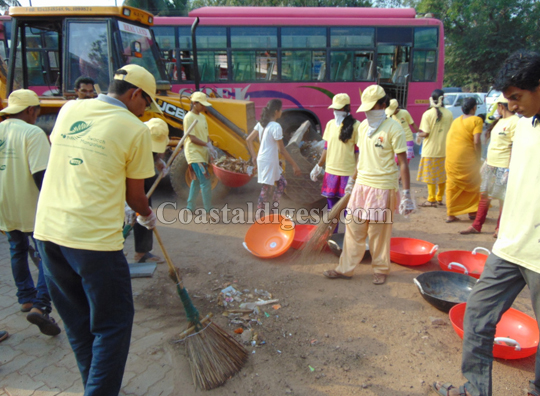
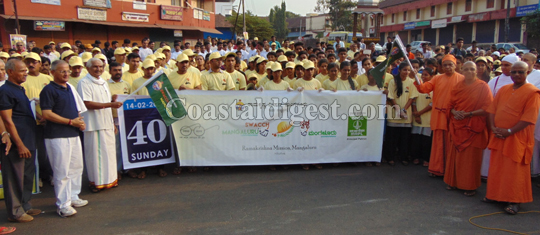
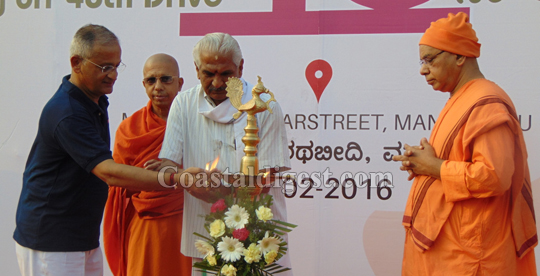
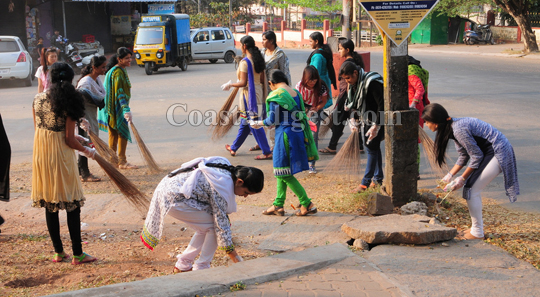
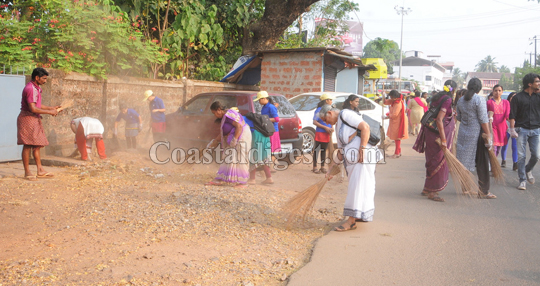

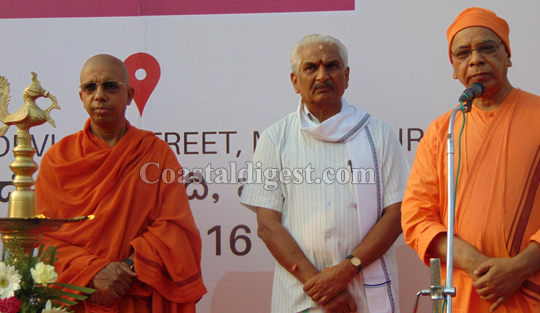

Comments
Bhatta should clean his dirty heart and mind before that....
First please clean your heart and then the roads.
First clean your mind and heart. Why the broom is not same with KPB and student? Here also they divided may be uppercaste lowercaste?
YEREG AUVE KIRI KIRI...
YENK IND YAWU,
ROAD CLEAN MAL-TANNDU UPPUVE
The dirty streets must have shied when Dirty minds like Kalladka Prabhakar Bhat clean it!
GO TO GUTTER AND CLEAN. WHY NOT GUTTER.
MOSQUITOS COMES FROM GUTTER
GOOD TO SEEE KALLADKA BHAT TAKING PART IN SWACCH MANGALORE ...... INSTEAD OF GIVING THE COMMUNAL SPEECH AND DISTURBING THE YOUTH FOR MURDER AND ALL...
KEEP IT UPP BHAT .....
Posa Drama.. Dirt inside and cleaning outside.. Cheap publicity.
Dear All,
Please wait and watch for the next, if Bhatta is there then don't expect the best. He is the poison snake never trust.
A very subject that to clean our city . Cleanliness is the half of faith - said by Prophet Mohammed.
Organizers should keep aside politicians and communal hate speakers.
Call all the communal leaders like Swamies, Fathers, Imams , students, teachers, lawyers, social workers, men and ladies , childrens etc. etc.
Its the time to clean your Hearts and Tongue from hatredness
DEAR RKM, PLEASE DO CLEAN THE HEART OF KPB....
PLEASE IN YOUR NEXT CLEAN HEART DRIVE, GIVE FIRST PREFERENCE TO BATTA....
Instead of spreading hatrednes, KPB should keep himself busy in such activity,
\Kali Dimag Shaitan Ka Ghar\""
instead of cleaning the clear roads, they should take up the ugly part of the road, where garbage is piled up.... that is really the deshbhakti.....this is all for drama......
Clean your communal mind first
good work, keep it up sir, we are looking good support from u for our upcoming events.
its my humble request to organize every month this kind of cleaning drive. it will help to keep the city clean.
good work sir, we are proud of you.
Kalladka Bhat at his best ....Cheers
Kalladka Bhat looks at his best...!!!
Add new comment